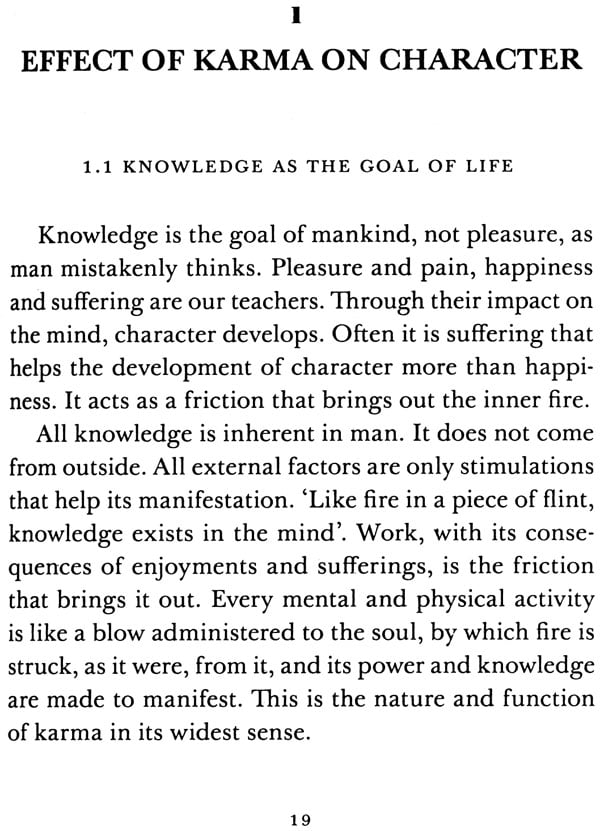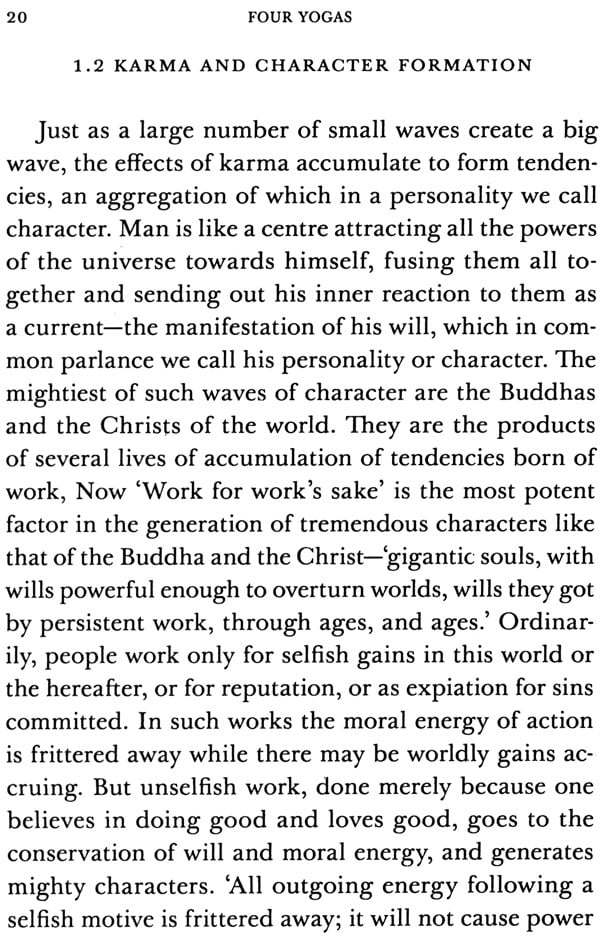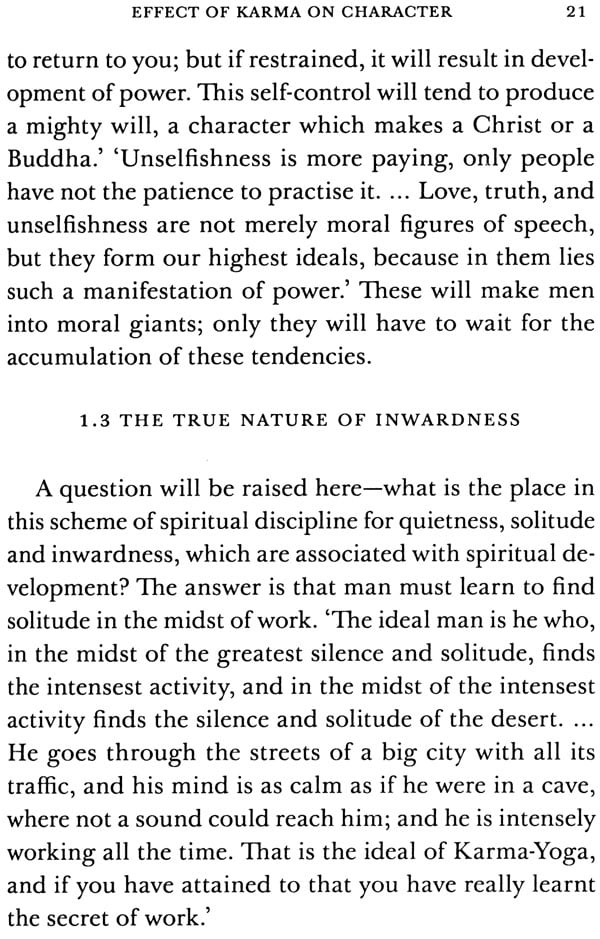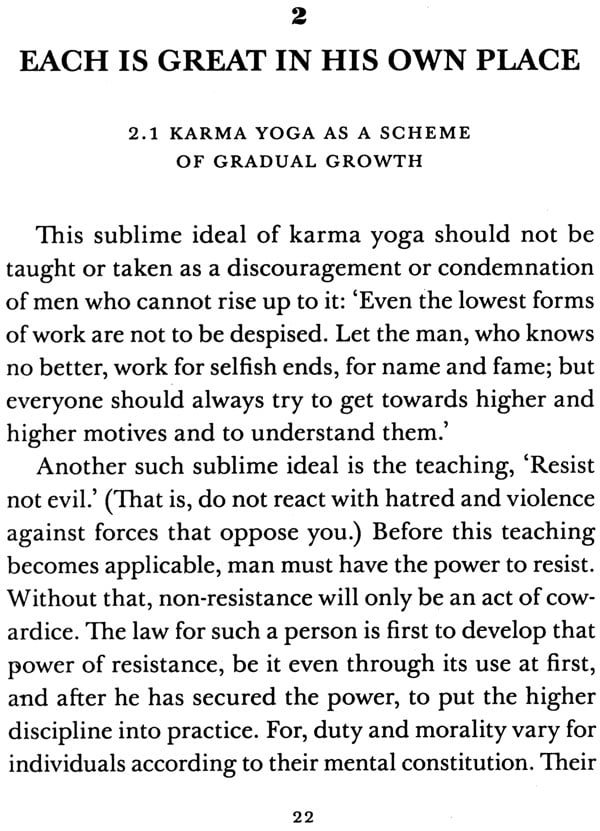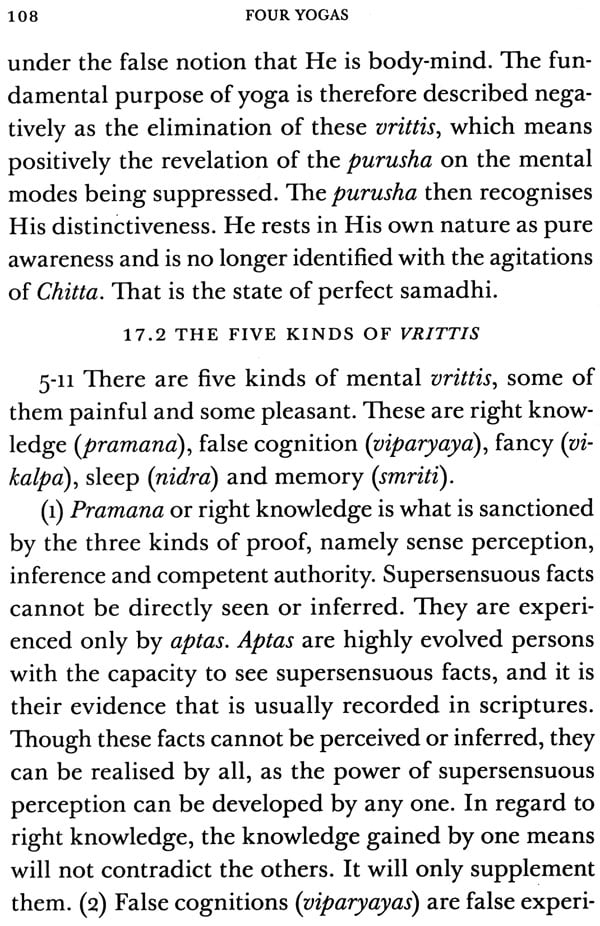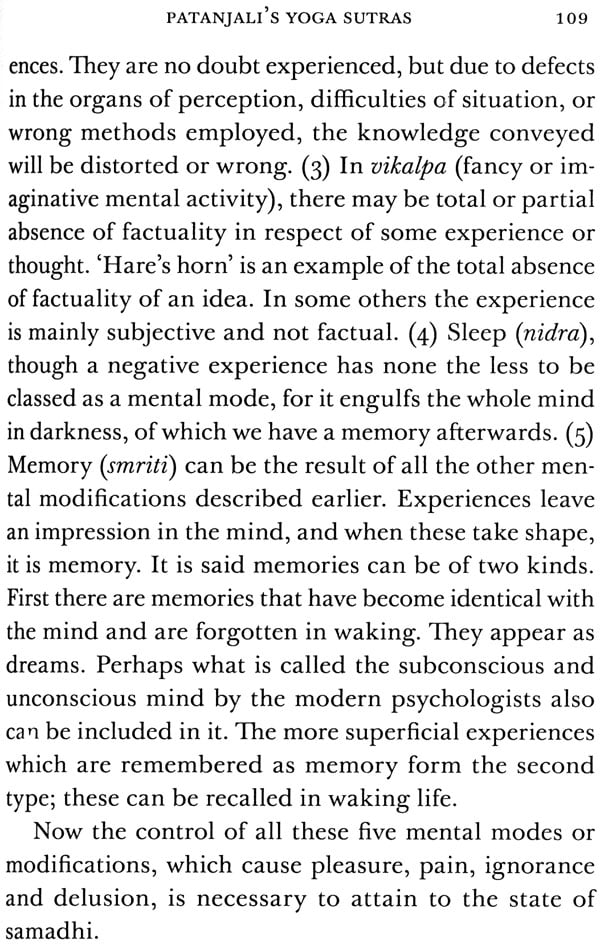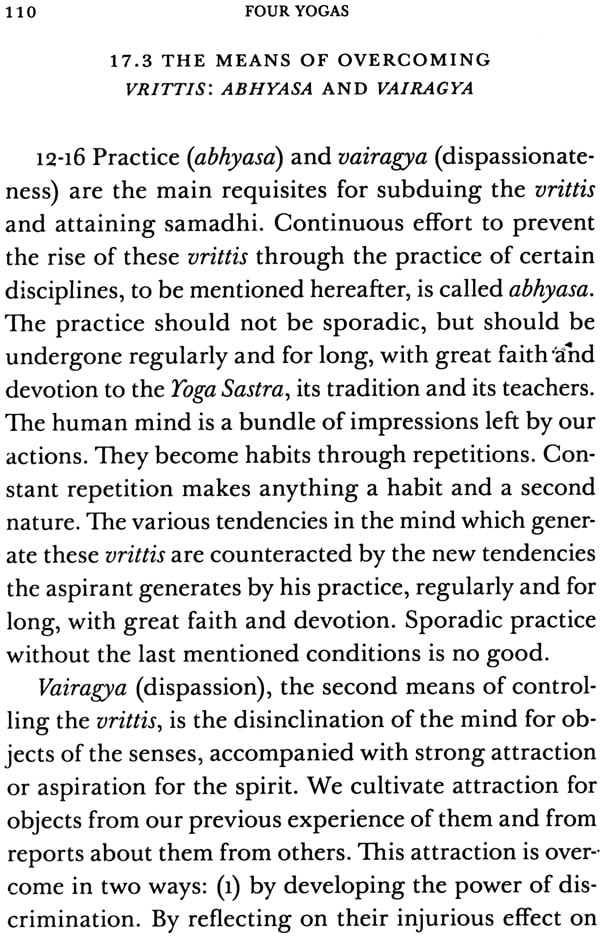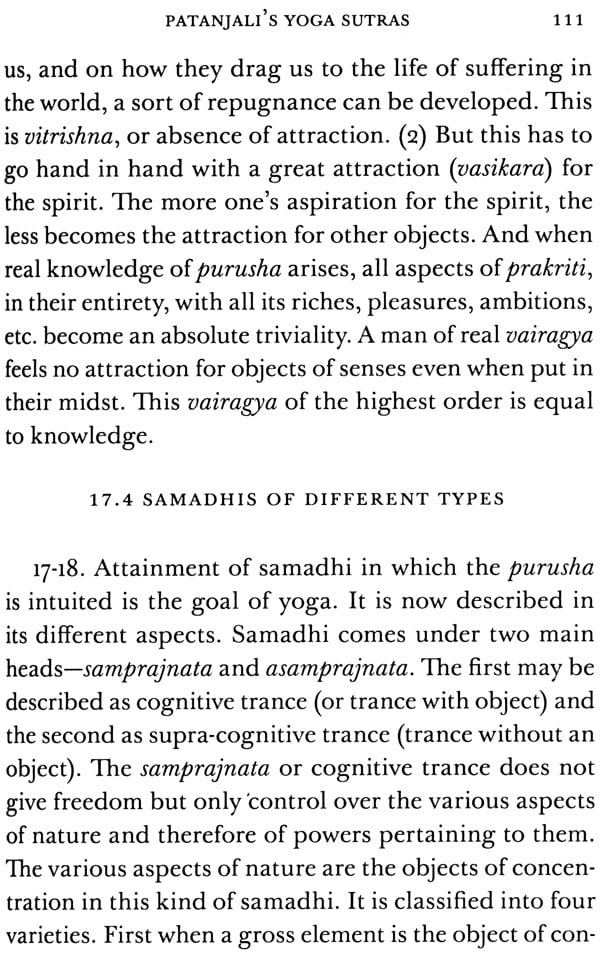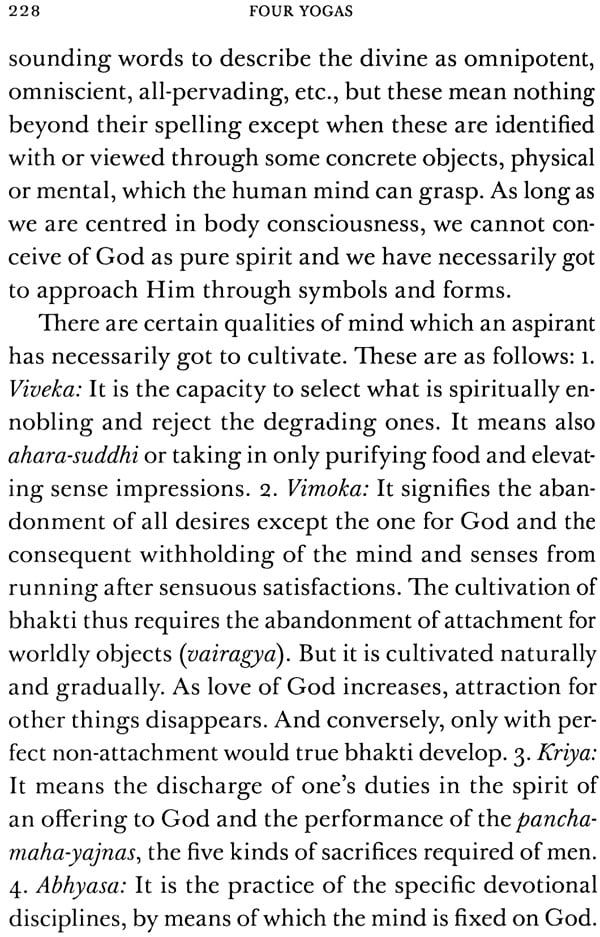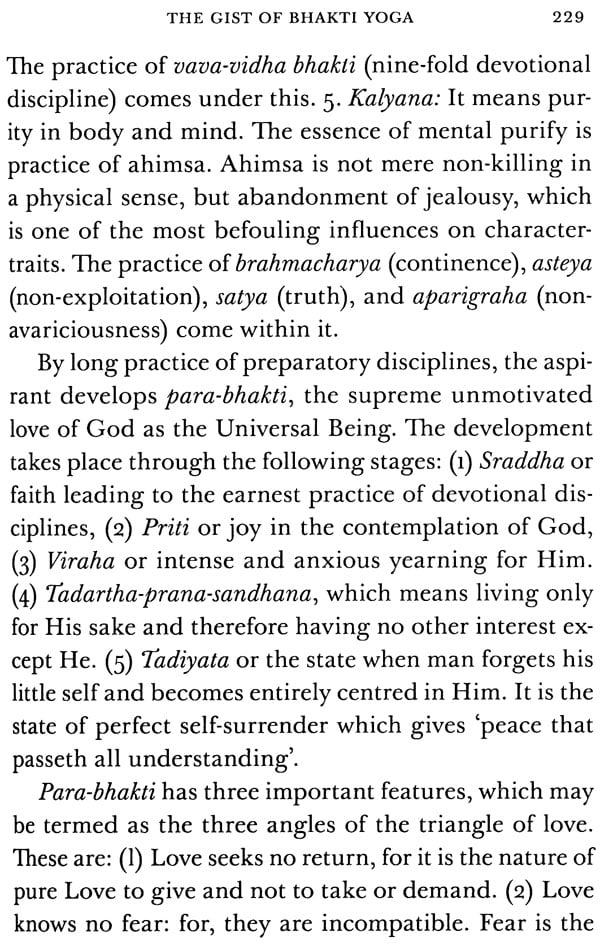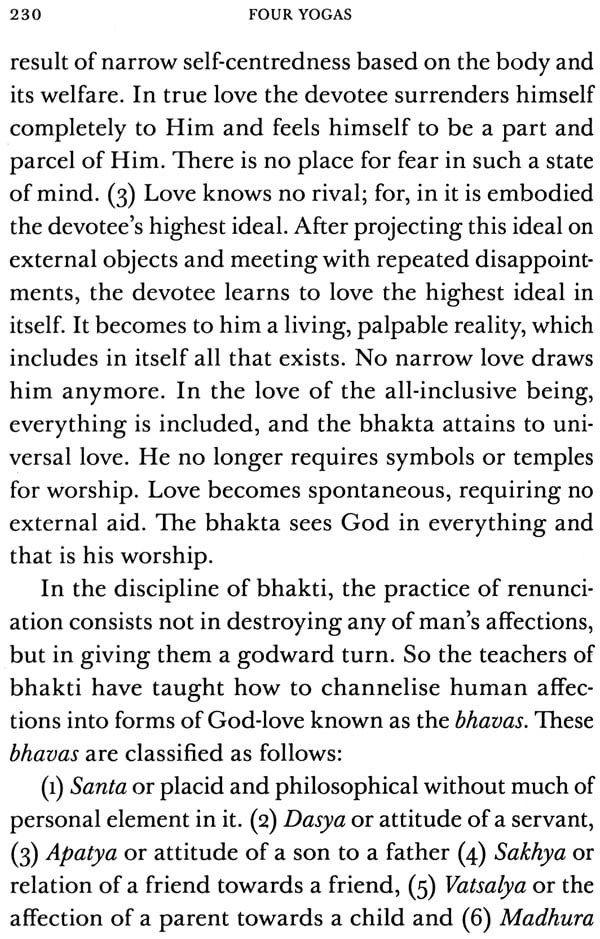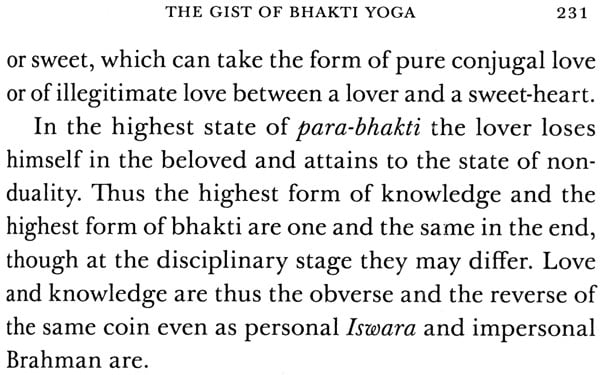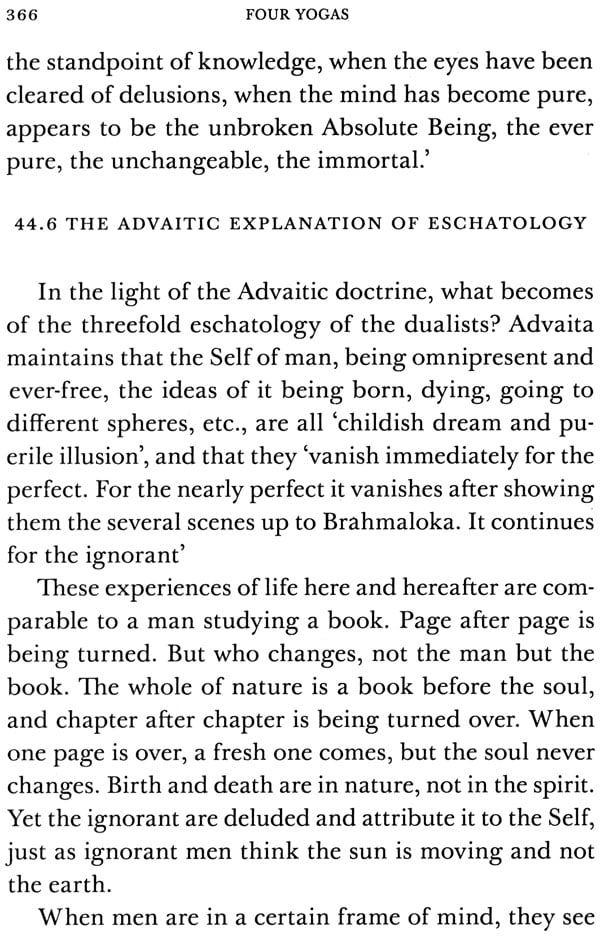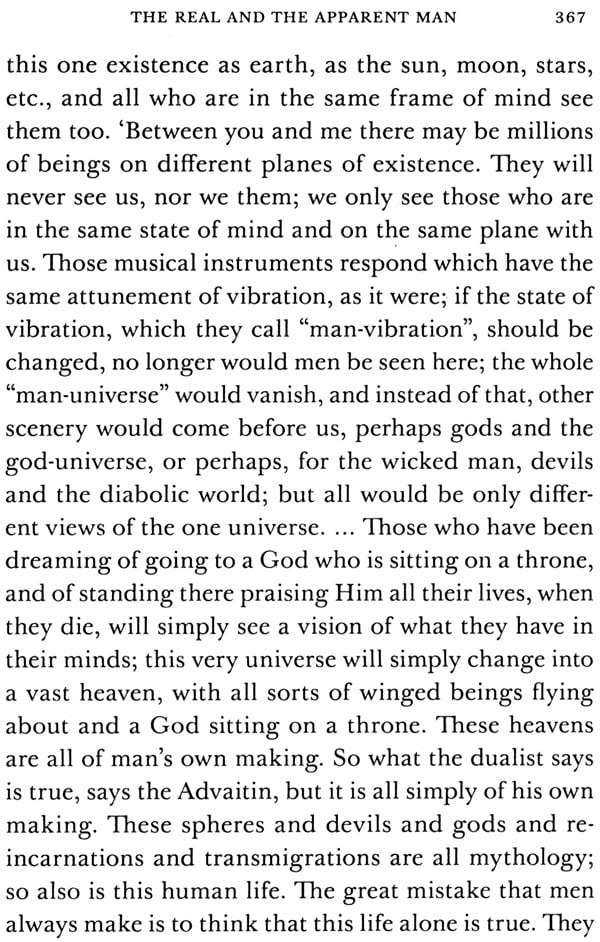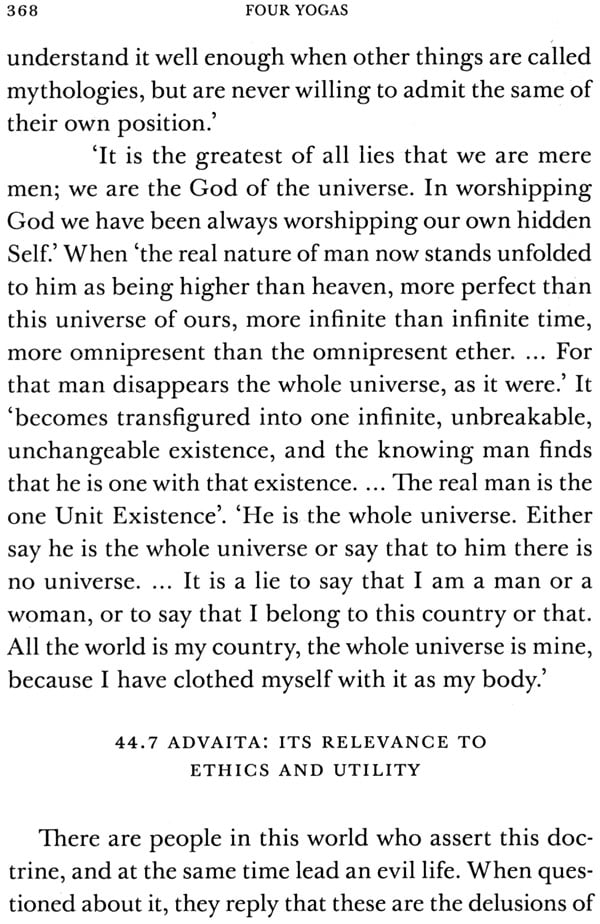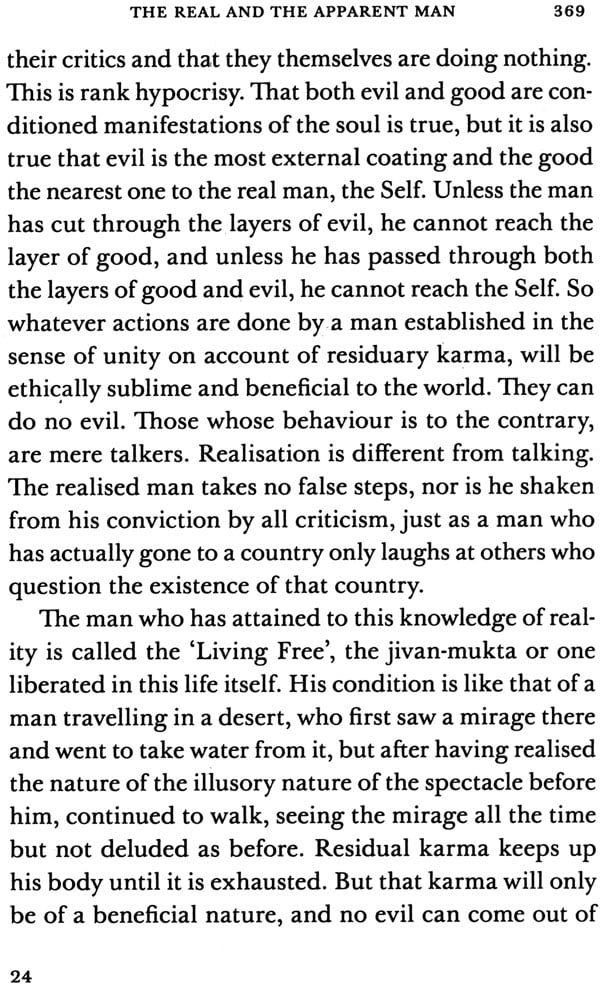
The Four Yogas of Swami Vivekananda
Book Specification
| Item Code: | IDJ251 |
| Author: | Swami Tapasyananda |
| Publisher: | ADVAITA ASHRAM KOLKATA |
| Language: | English |
| Edition: | 2019 |
| ISBN: | 9788175050891 |
| Pages: | 231 |
| Cover: | Paperback |
| Other Details | 7.0 inch X 5.0 inch |
| Weight | 300 gm |
Book Description
This volume of about two hundred and fifty pages dealing with the four Yogas Karma Yogas, Raja Yoga, Bhakti Yoga and Jnana Yoga is a précis of Swami Vivekananda's great lectures on these subjects published originally in four volumes, here condensed into about one third of the original. Attempt has been made here to compress the matters both by abridgement and re-telling, while at the same time retaining several inspiring passages of the original, which are put in quotations.
The object of this book is two-fold on the one hand, to help new students of Swami Vivekananda literature with a general survey of the teachings which they are going to study in detail in the original, and on the other hand, to give those who have already studied them in the original, a brief Note to help refresh their memory. Every effort has been made to very faithful to the original, as also to interest the reader in the original speeches of the great Swami through their summarized presentation, interspersed with appropriate quotations.
The main features of the book are: 1. It compresses the matter into a little less than one third of the original. 2. The subject of each chapter is thoroughly analysed and topical subsidiary headings are given. 3. With the exception of Jnana Yoga, summaries of the other Yogas are given at the end of the each book. 4. In the Raja Yoga, the second part comprises the Yoga Aphorisms and the comments on them. Here the Aphorisms are omitted. The comments are summarized under appropriate sub-headings, which have reference to the Sutras.
There is also another purpose behind this abridgement. It is the experience of many readers of Swami Vivekananda literature that they are not able to grasp the thought content of them, though it elates them and grips their attention. If we analyse the reason for this, it will be found in the nature of the text itself. They are of such a high inspirational quality and are so highly charged with emotion that they become more a subject of experience than an object of analytical thought. Not that there are not thought and well packed arguments on recondite topics in them, but the brilliance of the inspirational quality keeps the others excellences submerged. Men therefore are inclined to read them more with their hearts then their head. One subject of the abridgement and retelling is to lift up and hold to view the rich thought content, which some at least might have missed in their reading of the original.
If this condensed version of the Yoga in this series called "Studies in Swami Vivekananda" is successful and meets the need of student of Swami Vivekananda literature, we shall follow it up with two others similar volumes on "The Others Philosophic Lectures of Swami Vivekananda" and "The Nationalistic Lectures of Swami Vivekananda."
| Publisher's Note | 3 | |
| Preface | 5-7 | |
| | ||
| 1 | Effect of Karma on Character | 19-21 |
| 2 | Each is Great in His Own Place | 22-26 |
| 3 | Detached Work: Its Secret | 27-32 |
| 4 | Concept of Duty | 33-39 |
| 5 | In Helping The World We Help Ourselves | 40-43 |
| 6 | Non-Attachment is Self Abnegation | 44-49 |
| 7 | The Ideal of Freedom | 50-61 |
| 8 | Resume-The Gist Of Swami Vivekananda's Karma Yoga | 62-64 |
| | ||
| 9 | Prologue | 67-71 |
| 10 | Limbs of Yoga | 72-76 |
| 11 | Prana | 77-82 |
| 12 | the Psychic Prana | 83-87 |
| 13 | ThePsychic Prana And Its Control | 88-91 |
| 14 | Pratyahara And Dharana | 92-95 |
| 15 | Dhyana And Samadhi | 96-102 |
| 16 | Raja Yoga in a Nutshell | 103-105 |
| 17 | Summary of Swami Vivekananda's Commentary on Patanjali's Yoga Sutras | 106-155 |
| | ||
| 18 | What is Bhakti? | 159-162 |
| 19 | The Philosophy of Iswara | 163-169 |
| 20 | Aids to Bhakti | 170-177 |
| 21 | Incarnate Teacher & Incarnation | 178-181 |
| 22 | The Philosophy of The Mantra | 182-185 |
| 23 | Image Worship | 186-194 |
| 24 | The Method And The Means | 195-199 |
| 25 | Renunciation | 203-210 |
| 26 | Stages of Bhakti | 211-214 |
| 27 | The Peak of Bhakti | 215-223 |
| 28 | The Gist of Bhakti Yoga | 224-231 |
| | ||
| 29 | The Need For Religion | 235-241 |
| 30 | Man's True Nature | 242-249 |
| 31 | Maya And Illusion | 250-258 |
| 32 | The Conception of God | 259-264 |
| 33 | Maya And Freedom | 265-270 |
| 34 | The Absolute And The Manifestation | 271-280 |
| 35 | God in Everything | 281-287 |
| 36 | Realisation | 288-296 |
| 37 | Unity In Diversity | 297-303 |
| 38 | The Freedom of The Soul | 304-314 |
| 39 | The Cosmos- The Microcosm | 315-319 |
| 40 | The Cosmos- The Microcosm | 320-329 |
| 41 | Immortality | 330-337 |
| 42 | The Atman | 338-349 |
| 43 | The Atman-its Bondage And Freedom | 350-356 |
| 44 | The Real And The Apparent Man | 357-371 |
